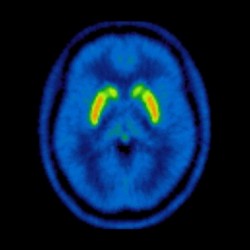By Helen Figueira
January 19, 2009
Time to read: 2 minutes
 PET Psychiatry Group demonstrates link
PET Psychiatry Group demonstrates link
Individuals characterised as being at risk of developing schizophrenia within 1–2 years have elevated levels of the brain messenger dopamine, a study led by members of the CSC’s PET Psychiatry group, and recently published in the Archives of General Psychiatry, has shown.
The study tracked the levels of dopamine, tagged with the positron-emitting isotope 18F, in the striata of patients with an ‘At-Risk Mental State’ (ARMs) – patients meeting criteria of psychotic symptoms including abnormal beliefs, perceptions and speech. It was found that levels in ARMS patients approached those of people already diagnosed as having schizophrenia, and that higher levels of dopamine were found in the striata of those with the most severe symptoms.
The precise imaging technique used also allowed identification of the region where dopamine concentration was highest, in the associative striatum.
Oliver Howes, the lead author of the paper, said, “Our finding that dopamine levels are high in people showing very early signs of developing schizophrenia gives an important clue as to what is causing schizophrenia and other psychotic illnesses”. The findings help to explain why ARMS patients given antipsychotic drugs that target the dopaminergic system tend to be less likely to develop psychotic symptoms.
However, the identification of the associative striatum as the region linked to schizophrenia offers a new target. Howes said, “…current drugs are acting in the wrong place to address the primary problem – designing drugs to reverse the primary problem could offer the hope of better treatments for schizophrenia.”
Stefan Janusz